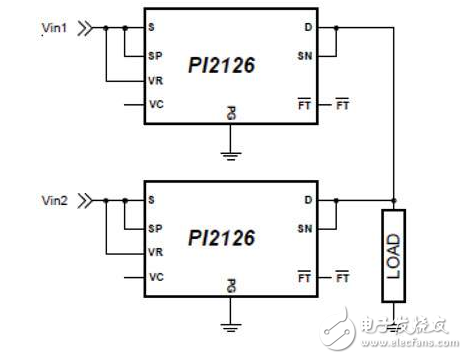
资料下载

运动促进冗余电源控制器的设计
运动促进冗余电源控制器的设计
数据中心服务器、电信系统和军事基础设施等关键任务应用程序不能容忍任何故障或停机时间。因此,它们在冗余电源配置中使用两个或多个电源,以确保如果一个电源故障,另一个电源可以无例外地提供全功率。ORing控制器IC是用来实现冗余电源配置。基本上,在这个方案中,两个电压输入或输出到一个共同的。在事件一输入电源发生故障或短裤,ORing电路保护冗余总线与系统。冗余电源结构用于各种不同的总线电压,范围从5 V到48 V。
由于系统的功率水平和密度的需求,在过去是不严格的,ORing二极管主要用于这些应用程序。然而,随着功率水平的上升和提供高效率解决方案的压力不断增加,传统的方法已经不再适用于当今的高端系统,因为二极管具有很高的正向压降。这意味着在高功率水平的高电流,功耗也很高。例如,一个典型的正向电压下降为400毫伏的肖特基二极管,功耗为800毫瓦,或略小于1瓦,与2的电流单位。能够处理这种功耗的二极管既大又昂贵。

While a MOSFET offers an attractive alternative solution because its on-state resistance RDS(on) is very low (typically a few milliohms), and substantially lowers power loss as compared to a Schottky, it has a significant drawback. When a MOSFET is turned-on, current can flow in both directions through its channel. Consequently, if any input power source fails due to a short circuit, a large reverse current which can flow through the MOSFET and damage the redundant power source will be induced. Because of this, it is essential that the active ORing solution be very accurate and capable of extremely fast detection of reverse current fault conditions. To address this issue, the MOSFET is combined with a controller IC that can quickly detect the reverse current and shut the MOSFET off.
声明:本文内容及配图由入驻作者撰写或者入驻合作网站授权转载。文章观点仅代表作者本人,不代表电子发烧友网立场。文章及其配图仅供工程师学习之用,如有内容侵权或者其他违规问题,请联系本站处理。 举报投诉
- 相关下载
- 相关文章





